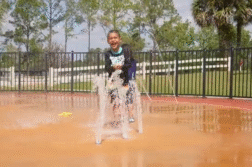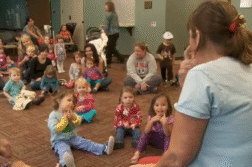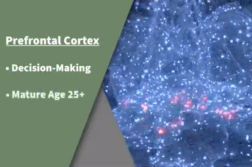CHICAGO, Ill. (Ivanhoe Newswire) – Bones so weak that the slightest tumble or fall can break them – that’s the reality for thousands of children who live with unicameral bone cysts, which are non-cancerous bone tumors. Nobody knows why they form. But the surgery to get rid of them can be painful, until now. A new technique is helping to make these brittle bones stronger and let kids be kids.
Life is pretty sweet for 12-year-old Brooklyn Tissiere, but it hasn’t always been this way.
“I was skipping on my kitchen floor with socks, and I fell,” she recalls.
That was the first time Brooklyn broke her arm. In all, her fragile bone snapped five times.
Her father, Mark Tissiere, remembers another incident.
“She had just stepped off a low diving board at our local pool. And when she pushed herself up, her arm broke,” he says.
Brooklyn had a unicameral bone cyst.
“It’s a fluid-filled cyst that expands bone and makes the bone thinner. So, then, the walls essentially become as thin as an eggshell,” explains Dr. Shanker Rajeswaran, MD, Division Chief of Pediatric Interventional Radiology at Lurie Children’s Hospital.
Six years ago, doctors used a more invasive surgery on Brooklyn, making a large incision, scraping the cyst wall, and then, grafting it with bone. Unfortunately, the cyst came back. Then, Brooklyn became the first person to undergo a new minimally invasive technique developed at Lurie Children’s Hospital.
Dr. Rajeswaran further explains, “Through two small pokes, we get two needles into the cyst, and we inject a medicine to destroy the cyst.”
Doctors inject the cyst with doxycycline to destroy it, and then inject a bone graft to strengthen the bone.
Brooklyn hasn’t had any breaks in the last four years and enjoys playing a host of sports she never thought she would be able to enjoy again.
The cysts are more common in boys than girls. They are usually not painful, and many go undetected. The cyst will usually stop growing when a child is full-grown, and most will fill in and disappear.
Contributors to this news report include: Marsha Lewis, Producer; Roque Correa, Videographer & Editor.
To receive a free weekly e-mail on medical breakthroughs from Ivanhoe, sign up at: http://www.ivanhoe.com/ftk
MEDICAL BREAKTHROUGHS
RESEARCH SUMMARY
TOPIC: REPAIRING BRITTLE BONES: FIXING BONE CYSTS IN KIDS
REPORT: MB #5091
BACKGROUND: Bone cysts are fluid- filled areas inside of a growing bone that has yet to develop into an actual bone. They are benign, which means not cancerous, and develop in children and young adults mostly. Although it can involve any bone, the most common sites are the distal femur, proximal humerus, the proximal tibia, and the spine. Most cases cause mild pain, but the rapid growth of a lesion may mimic malignancy. Symptoms of a bone cyst generally do not cause pain but if they are large enough, they can cause the bone to become weaker and fracture much easier. This type of fracture is called a pathologic fracture.
(Source: https://www.ncbi.nlm.nih.gov/books/NBK539849/ https://www.hopkinsmedicine.org/health/conditions-and-diseases/bone-cysts#:~:text=Bone%20cysts%20are%20fluid%2Dfilled,when%20it%20otherwise%20wouldn’t.)
DIAGNOSING: Bone cysts are diagnosed mainly by X-ray, CT scan or an MRI. The MRI is the preferred choice of the three as it can give a more complete assessment of a bone cyst and the structures surrounding it. The MRI detects multiple blood-filled cystic spaces and walls. Together with the internal lining of a cyst wall it represents the solid elements of the destructive tumor. After discovering on an X-ray or MRI, a biopsy is performed to confirm the diagnosis.
(Source: https://www.nationwidechildrens.org/conditions/aneurysmal-bone-cyst)
TREATMENT: Bone cysts can be treated with injections, which can be effective. Sometimes a surgery called a curettage is another option; a surgeon opens the cyst and scrapes out its contents and lining. Surgeons also may apply certain substances such as ethanol to the inside the open cavity to destroy the remaining cyst. The recovery time if you choose surgery is about three to six months, which is similar to the timeline of someone who breaks their arm. Physical therapy will help patients return to normal activities.
(Source: https://my.clevelandclinic.org/health/diseases/22412-unicameral-bone-cyst)
FOR MORE INFORMATION ON THIS REPORT, PLEASE CONTACT:
Julianne Bardele
(321) 227-4265
If this story or any other Ivanhoe story has impacted your life or prompted you or someone you know to seek or change treatments, please let us know by contacting Marjorie Bekaert Thomas at mthomas@ivanhoe.com




